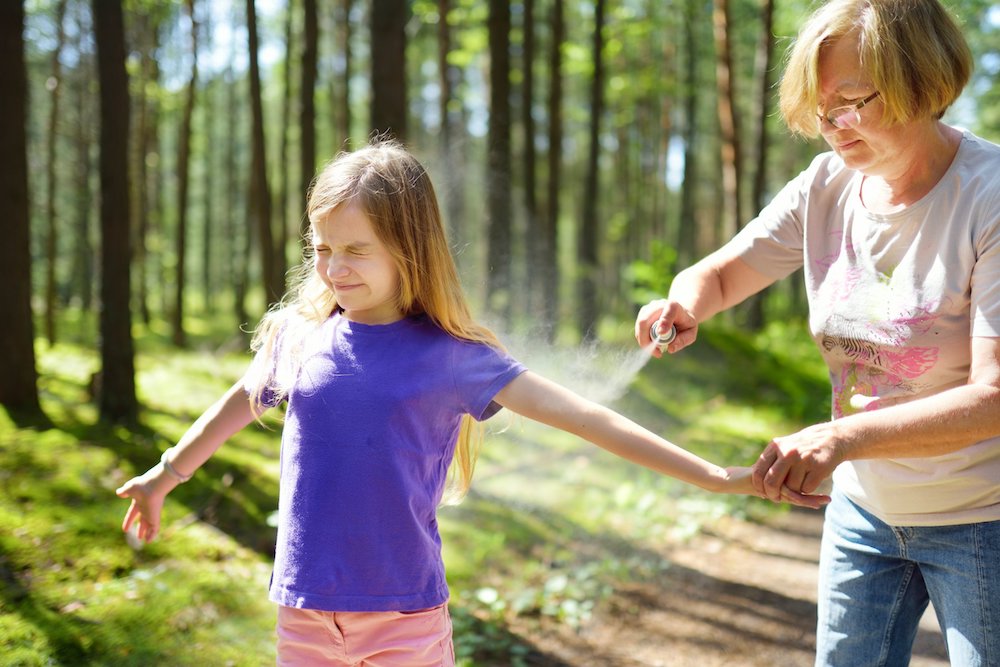Image by 123RF
By Dr. Thomas Mather
“So if you’ve been bitten by a tick, a lot of times people kind of panic.”
Finding a tick on yourself, your family member, or your pet can be scary. While it’s vital to remove a tick as soon as possible, it is also important to ensure that you do it properly, and that you take the right steps once it’s removed. This includes storing the tick, and sending it in for testing in case it is carrying a dangerous tick-borne disease like Lyme, or a dangerous allergen like Alpha-gal.
1. Remove the tick, the best strategy for removing a tick is by
using fine-tipped, pointy tweezers like the ones from TickEase. By having something with a very pointy tip, you are able to get as close to the skin as possible and pull the tick out.
How to remove a tick:
Hold tick with fine-tipped, pointy tweezers
Get as close to the skin as possible
Pull straight up in a slow, steady motion
2. Keep the tick in a plastic bag
After removing the tick, don’t throw it away. Instead, place it in a Ziploc bag. Most people won’t know how to identify what kind of tick it is, and if you don’t, you won’t know what kind of diseases it may be carrying.
3. Identify the tick
Next, take a clear photo of the top side of the tick, and send it to TickSpotters, where my team and I will identify it for you within 24 hours with the following information:
The kind of tick it is
How long it was attached
And what kind of germ it likely, or even didn’t likely, transmit to you
4. Send the tick in for testing
After the tick has been identified and TickSpotters has let you know if the tick that bit you has a high chance of carrying a disease, you can choose to send in the tick to a testing facility.
It should be noted that while tick testing can be a helpful resource, it should not be used as a substitute for physician diagnosis of disease. Tick Testing Services Recommended by TickEncounter:
TickReport
Eco Laboratory
Ticknology
TickCheck
Safe Tick Removal, Storage, and Identification
If bitten, it is vital to remove the tick quickly and properly. Equip-4-Ticks shares the important steps to removing a tick safely, what to do with the tick once removed, how to get help with tick identification via TickSpotters, and where to send the tick to have it tested for Lyme disease.
About Equip-4-Ticks Resource Center
Equip-4-Ticks Resource Center, a collaboration between tick expert, Dr. Thomas Mather, PhD and Insect Shield Repellent Technology, was launched to offer tips, informational content, and a comprehensive video library to help the public stay protected from ticks and the dangerous diseases they may carry.
About Dr. Thomas Mather, PhD
Dr. Mather (a.k.a. “The TickGuy”) joined the University of Rhode Island in 1992 from the Harvard School of Public Health, and now serves as director of URI’s Center for Vector-Borne Disease and its TickEncounter Resource Center. His research focus is on tick ecology, area-wide tick control strategies, tick-bite protection, and tickborne disease prevention. His research and outreach programs are diverse, including anti-tick vaccine discovery projects, evaluations of targeted tick control strategies, tickborne disease risk prediction, as well as development of tick-bite protection decision support tools and social networking strategies for tickborne disease prevention. His work has attracted funding from a wide variety of sources, including the National Institutes of Health, Centers for Disease Control and Prevention (CDC), the US Department of Agriculture, the National Science Foundation, the Environmental Protection Agency, and the US Agency for International Development.
The Editorial Team at Lake Oconee Health is made up of skilled health and wellness writers and experts, led by Daniel Casciato who has over 25 years of experience in healthcare writing. Since 1998, we have produced compelling and informative content for numerous publications, establishing ourselves as a trusted resource for health and wellness information. We aim to provide our readers with valuable insights and guidance to help them lead healthier and happier lives.
































